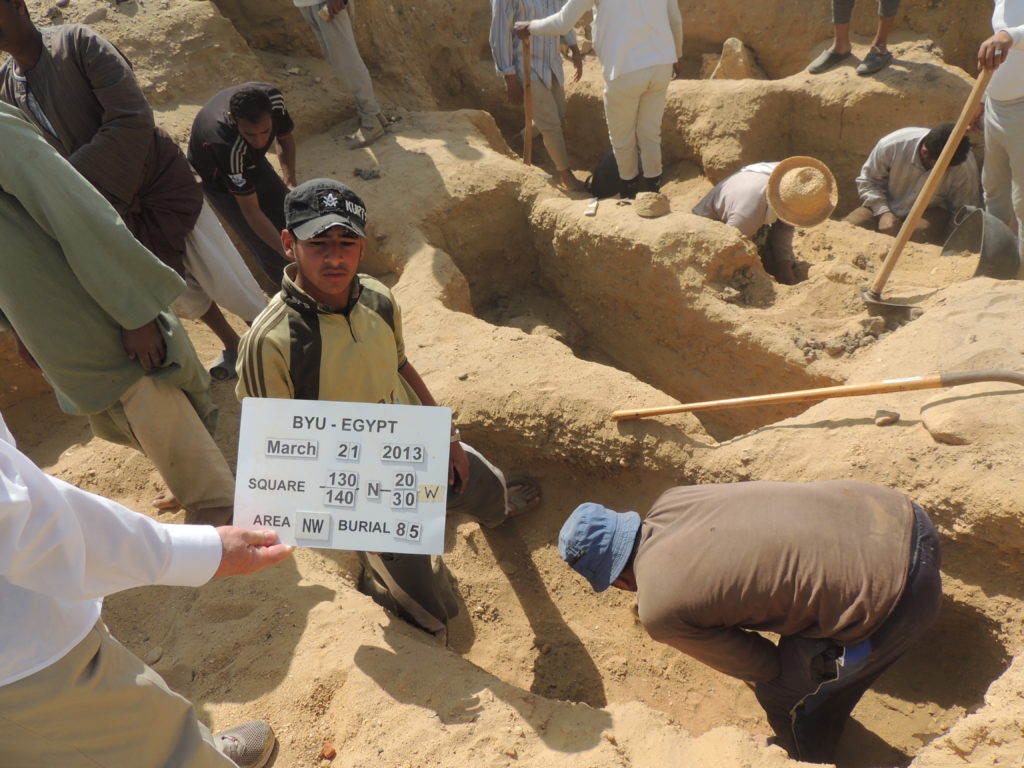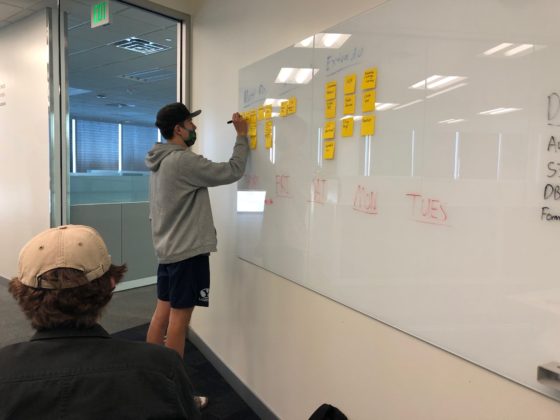
Once a mummified body is dug up, it can’t be dug up again.
“No one can ever excavate the same site twice, so the information learned on-site when excavating graves needs to be recorded immediately,” said Kerry Muhlestein, director of the BYU excavation project.
BYU’s excavation team in Egypt has been excavating tombs and burial sites for over 40 years. Muhlestein said it has always been extremely difficult to manage the amount of data the excavation team has gathered in the last 40 years.
The BYU information systems major hosts INTEX, an incredibly rigorous week-long final project, each semester. The information systems students have been tasked with creating a high-functioning web application for the excavators’ data.
“We do incredibly important work. One of the things about people in ancient Egypt is that they cared so much about being remembered after they die,” Muhlestein said.
He said there’s more data and information about the elite Egyptian citizens than common people. These excavations are opportunities for these common people to be remembered.
“We are trying to recover their lives, the things they love, the things they’re buried with. We want to understand what they believed in through the way they were buried,” Muhlestein said.
Muhlestein feels this project has a real obligation to make its findings available to people around the world. The excavation team has essentially tried everything from handwriting all data to creating endless spreadsheets.
“We’ve just ended up with volumes and volumes of information that no one can easily piece together,” he said.
Previously, Muhlestein said the department worked with biology, archaeology and ancient scripture students to undergo this data-collecting task. However, he said they finally recognized that they needed to work with students who deal with large amounts of data as a specialty or a career.
INTEX: an “interactive experience”
Professor Greg Anderson has been a leader in the BYU information systems program for 10 years. “INTEX takes everything the students have learned throughout the semester and applies it into one culminating experience,” Anderson said.
INTEX is a comprehensive project serving as the final for information systems students in the junior core in the fall and winter, with a different project each semester.
There are 46 teams of four students; INTEX begins with a kick-off meeting where a client explains what problem needs solving. The teams are given five to six days to create a solution to a problem. Winter semester’s client was Muhlestein’s team in Egypt.
Information systems junior Isaac Dayley said the excavators require a website that gives on-site excavators and scientists the ability to add new information into the system on the spot. The system needs to be easy to use and run analytics instantaneously. The website will give researchers on-site and in-labs access to all past data.
“It’s really hard to understand what data is telling you when the data isn’t standardized or in one accessible spot,” Dayley said. “Our solution for the Egypt excavators will be about putting data together and learning something from it later.”
Information systems junior Anthony Sharp said the creation of a high-performing database like this requires the teams to meet every single day, all day, during the given week before presentation day.
Sharp said his team always has a Zoom room open that a member can join at any point. The team meets every day for an average of 12 to 15 hours straight to make sure everything is on track.
Information systems junior Matt Jenson said it’s interesting to see how all of the different teams approach the project in different ways. It’s important to know what everyone’s strengths are so that the group can work cohesively, he said.
“I know that I’m nothing without my group; I depend on them so much,” Jenson said. A lot of learning happens from listening to his teammates and he feels lucky to work alongside them.
Andrew Kimball, a teammate of Jenson, said with the given time constraints, the team aspect of INTEX is essential. “If we didn’t work on a team, the project would be so big it would be impossible to do,” Kimball said.
Sharp said this semester professors, members of Muhlestein’s excavation board and members of the information systems board of directors will be some of the judges of the team’s presentations.
“They’ll be given 20 minutes to demonstrate their project and what they’ve done to solve the problem,” Anderson said.
The panel will be paying attention to their communication skills, sound logic and if they have truly found a solution to the problem. How the team members interact with their teammates during the presentation is a key indicator of their professional skills, Anderson said.
Anderson emphasized the importance of the team aspect of the INTEX experience by saying that collaboration is a huge part of future careers in the information systems industry.
“You can be the smartest person in the world, but if you can’t work with others, companies will never want you,” he said.
Since there will be so many different presentations for a solution, Muhlestein said the panel will choose the best parts of many.
The excavation project will then hire some of these information systems students to continue refining and analyzing the website alongside his own program’s employees. Muhlestein said the database will only grow from there.
Looking towards the future
A research experiment was recently done in 2020 to evaluate the effectiveness of the INTEX experience. Two information systems students were personally asked by Anderson to complete an intense and extensive survey experience for several students, alumni and professors. The data gathered showed that over 97 percent of the contributors believed INTEX benefited them later on in their careers.

“People that do INTEX remember every part of it 15 to 20 years later,” Anderson said. Many students take the skills they got specifically from their INTEX projects and start companies.
Anderson believes INTEX is strenuous and stressful, but an extremely rewarding experience. The professors wouldn’t want it any other way.
“We want our IS students to understand: if you can do something this hard, you can prove to yourself that anything is possible and change the world with what you’ve learned,” he said.
Jenson agreed with Anderson’s sentiment about INTEX’s value and intensity. He said real learning is more oftentimes not inside classrooms, but what students struggle with on their own and how they figure it out.
Dayley said INTEX shows the information systems junior core that even with everything they’ve learned in the classroom throughout the semester, there is so much each team has to completely teach themselves. He’s grateful for the knowledge that when he attends future job interviews, he can show employers entire products he has made from INTEX.
“At times our students may not feel this way, but believe it or not, INTEX is supposed to be uplifting,” Anderson said.







